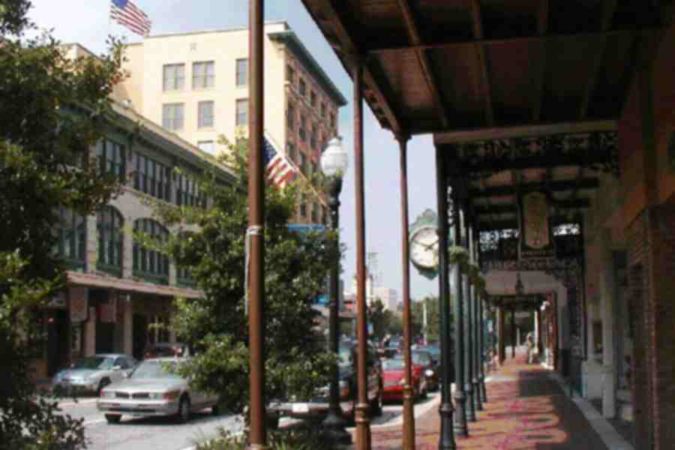
Secretary of State Ken Detzner announced today that the Downtown Jacksonville Historic District and Pensacola’s Palafox Historic District were recently listed on the National Park Service’s National Register of Historic Places.
“I am pleased to announce the recent listing of these large urban historic districts on the National Register of Historic Places,†said Secretary Detzner. “These districts provide a welcoming “sense of place†and unique authenticity that both residents and visitors enjoy. With their designation, and the support of Federal Historic Preservation Tax incentives, eligible properties may be adapted for retail and commercial purposes, enriching and expanding the heritage tourism experience so vital in our state.â€
The Downtown Jacksonville Historic District encompasses approximately 56 blocks (158 acres) and includes 176 contributing historic buildings, one contributing site, two contributing objects and 19 buildings previously listed on the National Register of Historic Places. The district is bounded by East and West Beaver Street on the north, Catherine Street on the east, Independent Drive and Courthouse Drive on the south, and North Pearl Street on the west. The period of significance is 1901 to 1965, and relates to the development of downtown Jacksonville, following the Great Fire of May 3, 1901. A number of historic buildings were designed and built by notable architects and builders who flocked to Jacksonville after the fire. In addition to commercial architecture, the downtown area includes many religious buildings. Architectural styles within the district include Prairie and Chicago School, Colonial Revival, Mediterranean Revival, Neoclassical Revival, Beaux Arts, Renaissance Revival, Gothic Revival, Romanesque Revival, Modernist, and Frame and Masonry Vernacular.
The Palafox Historic District in Pensacola contains 94 contributing historic properties and is roughly bounded on the north by East and West Wright Streets, on the west by Spring Street and Baylen Street, on the south by Zarragossa Street, and on the east by Tarragona Street and South Jefferson Street. The Palafox District spans three periods of significance, beginning in 1880 and ending in 1965. Over half of the historic buildings in the district date from 1880 to 1914, when Pensacola was a thriving seaport made prosperous by the lumber and fishing industries. Thirty-two buildings within the district were built between 1915 and 1945, mainly to support the U.S. military services stationed around Pensacola between World War I and World War II. The Palafox Historic District is near the earlier Pensacola Historic District, already listed on the National Register for its period of significance, 1800 to 1890.



